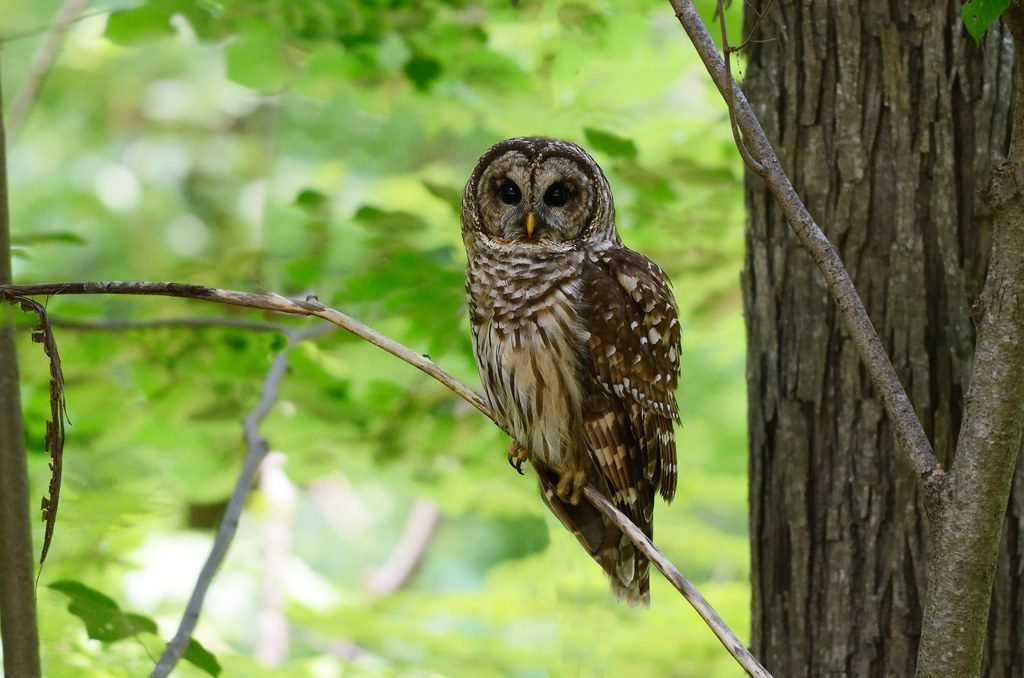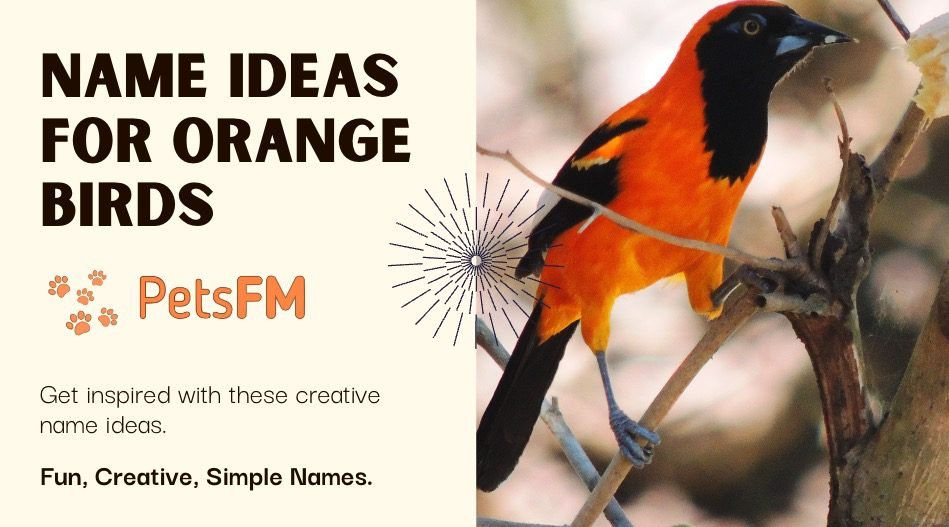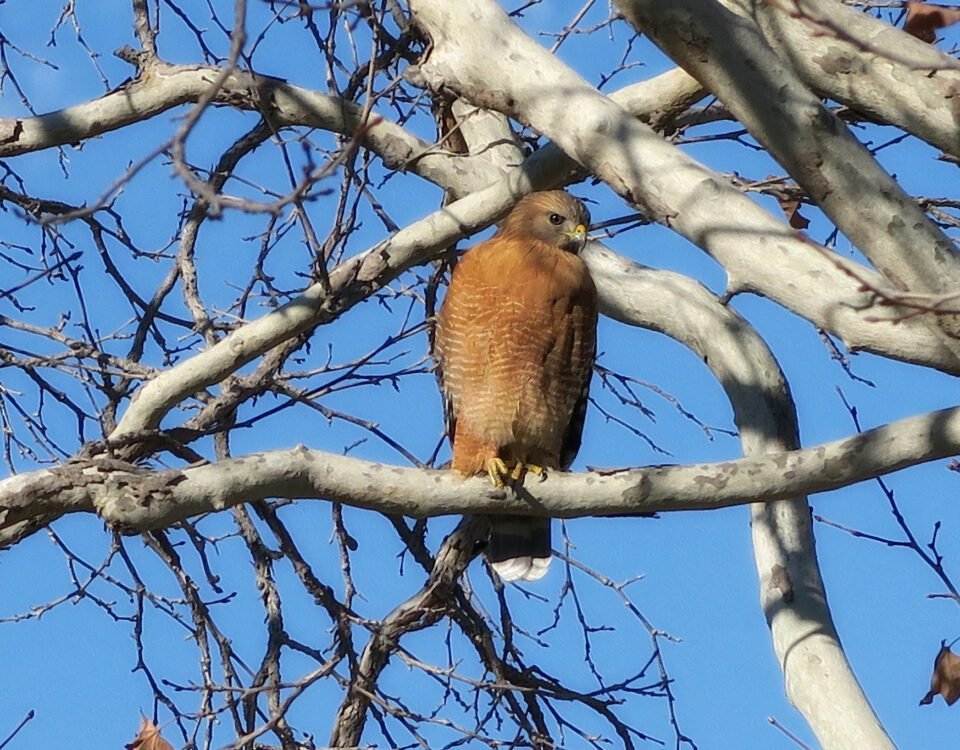![100+ Bird Names In French With English Translation [UPDATED]](https://petsfm.com/wp-content/uploads/2023/11/Screenshot-2023-11-24-at-11.07.46 PM-150x150.jpg)
![100+ Bird Names In French With English Translation [UPDATED]](https://petsfm.com/wp-content/uploads/2023/11/Screenshot-2023-11-24-at-11.07.46 PM-150x150.jpg)
![100+ Bird Names In French With English Translation [UPDATED]](https://petsfm.com/wp-content/uploads/2023/11/Screenshot-2023-11-24-at-11.07.46 PM-150x150.jpg)
100+ Bird Names In French With English Translation [UPDATED]
October 28, 2023


Do Hummingbirds Attack Humans? How to Save Yourself?
November 12, 2023Telugu, a classical and enchanting language of Southern India, holds a deep resonance with the region’s rich heritage, customs, and natural wonders. Rooted deeply into Andhra Pradesh and Telangana’s history, Telugu beautifully encapsulates the marvels of nature in its lyrical prose.
With their captivating colors and harmonious songs, birds have a respected place in Telugu literature and myths. In the Telugu cultural panorama, these avian wonders are not just sheer inhabitants of the heavens but represent deeper sentiments, dreams, and philosophies.
In this article, we will journey through various bird names in Telugu, offering their English translations and their role in the Telugu tradition.
Also, Read: 100+ Bird Names In Tamil With Translation in English [UPDATED]
100 Bird Names In Telugu
1: Sparrow (పిచుక | Pichuka)
A small bird: Sparrow delights with its cheerful chirrups in lively cities and serene villages, winning hearts effortlessly.
2: Peacock (నవాబు | Navaabu)
An epitome of magnificence and grace, the peacock showcases an awe-inspiring array of colors, making it the superstar of avian beauty.


Violette Peacock
3: Pigeon (పరిగె | Parige)
A frequent visitor of urban yards and gardens, the pigeon displays serenity, often symbolizing tranquility and unity in its gentle presence.
4: Crow (కాకి | Kaaki)
Omnipresent and sharp, the crow epitomizes resilience, thriving in diverse settings from bustling cities to the untouched countryside.
5: Parrot (చిలుక | Chiluka)
Distinguished by their vivid hues and unique mimicry skills, parrots are treasured mates, filling households with their cheerful chatter.
6: Eagle (గరుడ | Garuda)
Soaring above, the eagle exemplifies sheer power and accuracy, swooping on its target impeccably.
7: Owl (గూడె | Goode)
Veiled in the mystery of the night, the owl, renowned for its haunting cries, is a figure of wisdom in many tales.


8: Kingfisher (మినము పిట్ట | Minamu Pitta)
Polished by water bodies, the kingfisher astonishes with its rapid and elegant dive, seizing its aquatic prey adeptly.
9: Woodpecker (గొడ్డలి పిట్ట | Goddali Pitta)
Identified by their rhythmic drumming on trees, woodpeckers play a crucial role in sustaining forest ecosystems with their iconic activities.
10: Crane (కొంగ | Konga)
Gracing wetlands with their statuesque stature, cranes captivate onlookers with their synchronized and melodious mating displays.
11: Duck (ఆత | Aatha)
Glide gracefully in tranquil waters, ducks are known for their gentle quacks and amusing, waddling gaits.


Wood Ducks
12: Swan (హంస | Hansa)
Swans glide effortlessly over waters, their pristine plumage often becoming the subject of many romantic tales and legends.
13: Cuckoo (కోకిల | Kokila)
As spring arrives, the enchanting melodies of the cuckoo permeate the woodlands, evoking joy and nostalgia among listeners.
14: Myna (మైన | Maina)
A familiar urban dweller, the myna is friendly and vocal, livening up the city ambiance with its spirited calls.
15: Dove (ప్రేమ పక్షి | Prema Pakshi)
Synonymous with peace and serenity, the dove’s soothing coos provide a harmonious backdrop to peaceful dawn choruses.
16: Vulture (గిడ్డ | Gidda)
Often misjudged by their appearance, vultures play an essential role in the ecosystem by consuming carrion, thus maintaining cleanliness.
17: Quail (కాడేలు | Kaadelu)
Untouchable in nature, quails are small birds, adept at hiding in grasslands, and are recognized for their musical calls.
18: Falcon (గారుడ | Gaaruda)
Held in high regard, falcons are formidable aviators, celebrated for their swift flight and mid-air prey capture prowess.
19: Heron (కొంగ | Konga)
Grand and poised, herons are often spotted standing still by water bodies, anticipating a catch with their elongated necks.
20: Penguin (పెంగ్విన్ | Pengwin)
Native to colder climates, penguins may waddle adorably on land but are swift and agile swimmers underwater.


The African Penguin
21: Flamingo (ఫ్లామింగో | Flaamingo)
Distinguished by their vibrant pink hue and singular leg stance, flamingos are captivating in marshy terrains.
22: Canary (కెనారీ | Kenaari)
Petite and vibrant, canaries have charmed many with their melodic tunes, making them beloved household pets.
23: Hummingbird (హమ్మింగ్ పక్షి | Hamming Pakshi)
With rapid wing flutters, hummingbirds hover near blossoms, extracting nectar with their extended beaks in an enchanting dance.
24: Ostrich (ఉత్త్రాచారి | Uttaraachaari)
Hailing from Africa, these flightless giants may lack the power of flight, but they exhibit impressive speed on the ground.
25: Hawk (గారుడ | Gaaruda)
With keen eyesight, hawks soar loftily, swiftly descending upon their prey with remarkable accuracy.
26: Magpie (మ్యాగ్పై | Myagpai)
Distinguished by their contrasting hues, magpies are inquisitive birds, often seen gathering gleaming objects.
27: Raven (రేవెన్ | Reven)
Larger than their crow cousins, ravens possess profound calls and are commonly associated with wild terrains.
28: Partridge (కొయ | Koya)
Sturdy and robust, partridges resonate the wilderness with their melodic calls, echoing predominantly in rural regions.
29: Pelican (పెలికాన్ | Pelikaan)
Identifiable by their sizable throat pouches, pelicans are skilled fishermen, frequently seen scooping up their aquatic meals.
30: Finch (ఫించ్ | Finch)
Petite and vivacious finches grace gardens with their delightful chirrups, adding color and melody to nature’s symphony.
31: Kite (గాలి పక్షి | Gaali Pakshi)
Gracefully flying, kites are distinguished by their V-shaped tails, prominently visible against urban skylines.
32: Lark (లార్క్ | Laark)
Celebrated for their ascending flights, larks serenade with captivating songs, inspiring many poets and songwriters.
33: Swift (స్విఫ్ట్ | Swift)
Renowned for their velocity, swifts are mostly airborne, with an inclination for nesting atop city skyscrapers.
34: Nightingale (రాత్రి పాటగా | Raatri Paataga)
Embedded in folklore, nightingales enchant with their nocturnal melodies, gracing many silent nights with song.
35: Cockatoo (కొకతూ | Kokatoo)
Originating from Australia, cockatoos, with their vibrant crests, are adept at mimicking various sounds.
36: Albatross (అల్బాట్రోస్ | Albaatros)
Magnificent lords of the oceans, albatrosses boast expansive wingspans, facilitating graceful sea glides.
37: Starling (స్టార్లింగ్ | Staarling)
Renowned for their mesmerizing aerial ballets, starlings congregate in vast numbers, moving in synchronized, fluid patterns.
38: Moorhen (మూర్హెన్ | Moorhen)
Familiar with water edges, moorhens are easily recognizable with their distinctive red bills and forehead shields.
39: Jackdaw (జాక్డా | Jaakdaa)
Sporting silvery heads, jackdaws from the crow family are playful and often exhibit entertaining antics.
40: Tern (టేర్న్ | Tern)
Masters of the seas, terns dive efficiently, headfirst into oceans to snag fish with impeccable finesse.
41: Robin (రాబిన్ | Raabin)
Sporting a vivid orange breast, robins herald winter in various Western customs and frequently feature in festive cards.
42: Seagull (సముద్ర పక్షి | Samudra Pakshi)
Recognizable by their distinctive cries, seagulls thrive along coastlines but are also urban adapters.
43: Toucan (టూకాన్ | Tookaan)
Flaunting an oversized bill, the vibrantly hued toucans are a sight to behold in South American rainforests.
44: Pheasant (ఫెసంట్ | Phesant)
Strikingly beautiful ground dwellers, pheasants display varied plumages and are historically linked to hunting traditions.
45: Ibis (ఐబిస్ | Ibis)
Held in respect in ancient Egypt, ibises employ their curved beaks to forage in wetlands and muddy terrains.
46: Rook (రూక్ | Rook)
Predominant near farmlands, these sociable birds, identifiable by their bare face, thrive in communal settings.
47: Bunting (బంటింగ్ | Banting)
Petite and melodious buntings delight onlookers with vivid hues, making them a favorite among ornithologists.
48: Cormorant (కోర్మోరంట్ | Kormorant)
Notable for their characteristic sunning posture with wings outstretched, they dive proficiently to seize fish from aquatic depths.
49: Curlew (కర్లూ | Karlu)
Distinguished by their elongated, curved beaks, curlews gracefully scavenge in marshlands, extracting critters from the sludge.
50: Grouse (గ్రౌస్ | Graus)
Native to chillier landscapes, grouses’ patterned feathers grant them perfect camouflage against snow-blanketed landscapes.
51: Chiffchaff (చిఫ్చాఫ్ | Chifchaaf)
Recognized by their repetitive songs, these graceful birds flit through trees, serenading the surroundings with their melodies.
52: Goldfinch (గోల్డ్ఫించ్ | Goldfinch)
Brightening gardens with their vibrant plumage, their melodious tunes contribute harmoniously to nature’s ensemble.
53: Barn Owl (గోదారి గుబ్బ | Godari Gubb)
Often found in ancient edifices, their ethereal looks and haunting calls emblemize nocturnal mysteries.
54: Hoopoe (ఉపుప | Upupa)
Distinguished by their unique crests and intricate wings, they explore the ground with long beaks for nourishment.
55: Osprey (ఓస్ప్రీ | Ospre)
Mighty raptors, they plunge into aquatic empires, securing fish with precision, marked by their notable eye masks.
56: Chough (చఫ్ | Chaf)
Shining black avians, choughs, with their vivid red bills and legs, contrast starkly against rugged landscapes.
57: Wheatear (వీటియార్ | Veetiyaar)
Distinctive in appearance, wheatears often exhibit swift tail flicks on land, resembling gentle sea waves.
58: House Sparrow (ఇంటి పిచుక | Inti Pichuka)
Everywhere in urban settings, house sparrows, with their distinct chirrups, have become synonymous with the human soundscape.
59: Bulbul (బుల్బుల్ | Bulbul)
Predominantly Eastern birds, bulbuls are known for their melodic tunes, influencing various artistic expressions.
60: Laughing Dove (నవ్వుతూనే పావురం | Navvutoone Paavuram)
The ceaseless, chuckle-like coos of the delicate laughing dove resonate harmoniously during peaceful mornings and evenings.
61: Roller (రోలర్ | Roller)
These birds often perch, boasting a beautiful fusion of turquoise and brown, overseeing their domains.
62: Wood Pigeon (అడవి పావురం | Adavi Paavuram)
Sturdy pigeons with subtle shimmers forage in forests on an endless quest for fruits and seeds.
63: Avocet (అవోసెట్ | Avoset)
Elegantly colored in black and white, avocets utilize their curved bills to sift through aquatic regions for tiny prey.
64: Sandgrouse (ఇసుక గుడ్డు | Isuka Guddu)
Stout desert dwellers, sandgrouse gather at oases, their feathers uniquely adapted to absorb and carry water.
65: Pallid Swift (ఆకాశం పక్షి | Aakasham Pakshi)
With crescent wings and a paler underside, they prefer nesting in nooks, especially on cliff faces.
66: Common Grackle (సాధారణ గ్రాక్ల్ | Saadharaana Graakl)
With a shimmering, inky facade, grackles possess piercing pale eyes and often forage across open terrains.
67: European Bee-Eater (యూరోపియన్ తేనె పక్షి | European Tene Pakshi)
Radiating with colors, these birds astonish with their graceful flights, masterfully pursuing and devouring flying insects.
68: Golden Oriole (బంగారం ఓరియోల్ | Bangaaram Oriyol)
Males, radiant in yellow against black wings, frequently charm the surroundings with their tuneful calls.
69: Common Quail (సాధారణ కోడి | Saadharaana Kodi)
Camouflaged amidst grasslands, these plump birds resonate unique calls across their territories.
70: Stone-Curlew (రాయి కోడి | Raayi Kodi)
Gifted with large, captivating yellow eyes, these birds thrive in the nocturnal world, their eerie calls echoing in the silence.
71: White Stork (வெள்ளை கோக்கு | Vellai Kokku)
Tall and elegant, this bird is known for its big nests in trees. It has long legs and black wings standing out against its white body.
72: Pied Kingfisher (கரும் வெள்ளை மீன்கோத்தி | Karum Vellai Meenkotthi)
This bird hovers over the water with black and white feathers and dives down quickly to catch fish.
73: Common Crane (பொது குரான் | Podhu Kraan)
A tall grey bird that flies in big groups. Its dancing is beautiful to watch.
74: Secretary Bird (செயலாளர் பறவை | Seyalalar Paravai)
With long legs, this bird looks like an eagle and a crane. It’s good at catching snakes.
75: Bearded Vulture (தாடி கழுகு | Thaadi Kazhugu)
Different from other vultures, this bird likes to eat bones. It has a unique look and is very important for the environment.
76: MacQueen’s Bustard (மெக்வீன்ஸ் கோழி | Megveens Kozhi)
It’s a heavy bird that’s lovely to watch when it dances in the air to impress others.
77: Eurasian Spoonbill (ஐரோபிய ஸ்பூன்பில் | Eirobiya Spoonbil)
This bird has a special spoon-shaped bill. It uses it to find and eat fish in the water.
78: Hooded Crow (கூவி காகம் | Koovi Kaagam)
This crow is mainly found in the Middle East with a grey hood that looks different from its black body.
79: Pied Kingfisher (கரும் வெள்ளை மீன்கோத்தி | Karum Vellai Meenkotthi)
With a sharp call, this bird dives quickly into the water to catch fish. It has black and white feathers.
80: Rock Partridge (கல் காடை | Kal Kadai)
A bird with a red bill and lovely markings. It’s hard to see because it hides so well.
81: White-tailed Lapwing (வெள்ளை வால் லாப்விங் | Vellai Vaal Lapwing)
A graceful bird that flies over deserts. It has round wings and yellow legs.
82: Eurasian Collared Dove (ஐரோபிய கழுத்து புறா | Airobia Kazhuthu Pura)
A dove that often moves its tail in time with its soft calls. They’re often seen in pairs.
83: African Palm Swift (ஆப்ரிக்கன் பால்ம் ஸ்விப்ட் | African Paalm Swift)
A fast bird that flies around palm trees. It builds its home using palm leaves.
84: Yellow Wagtail (மஞ்சள் வேக்டைல் | Manjal Wegtail)
A bright yellow bird that wags its tail a lot, especially in spring.
85: Common Swift (பொது ஸ்விப்ட் | Podhu Swift)
A fast-flying bird with sharp wings. It loves catching insects while flying.
86: White-breasted Kingfisher (வெள்ளை மார்பு மீன்கோத்தி | Vellai Maarbu Meenkotthi)
A bird with blue feathers on top and a white belly. It’s often near water in the forest.
87: Eurasian Skylark (ஐரோபிய ஸ்கைலார்க் | Airobia Skylark)
A bird that loves to sing. It flies high in the sky and sings beautifully.
88: Common Wood Pigeon (பொது மரம் புறா | Podhu Maram Pura)
A grey pigeon with white on its neck. Its deep voice can be heard in the forest.
89: European Bee-eater (ஐரோபிய ஜேனுக்காட்டி | Airobia Jaenukaatti)
A golden bird that loves eating insects. It flies gracefully and looks beautiful.
90: Little Grebe (சிறிய கிரீப் | Siria Greeb)
A small water bird. It often disappears underwater and pops up somewhere else, surprising people watching.
91: Southern Masked Weaver (தெற்கு முகக்கவசம் வீவர் | Therku Mukakavasam Veever)
This bird sports a bright yellow neck and a dark face mask. Males show off their weaving skills, crafting nests over water.
92: Eurasian Crag Martin (ஐரோபிய கிராக் மார்டின் | Airobia Kraag Maartin)
A cliff-loving bird, its brownish-grey color and unique nests stand out. Its cheerful song enlivens its habitat.
93: Greater Hoopoe Lark (பெரிய ஹூபூ லார்க் | Periya Hoopoo Laark)
Tailored for desert life, it flaunts a mix of black, white, and brown feathers and a noticeable crest.
94: Cinereous Bunting (சாம்பல் பந்திங் | Saambal Bunting)
Often seen on poles, it sings sweetly. Its brown body is highlighted by pale face marks.
95: Shining Sunbird (காந்தளிரு சன்பேர்ட் | Kaanthalliru Sunbert)
The male glitters with a purple chest, quickly darting among flowers, helping with pollination.
96: Red-billed Chough (செவ்வாய் சௌக் | Sevvaay Chough)
With a shiny dark body, its red bill and feet grab attention. It loves coastlines and mountains.
97: Purple Sunbird (ஊதா சன்பேர்ட் | Oodha Sunbert)
Males shine in purple and green, energetically moving from one flower to another for nectar.
98: Yellow-vented Bulbul (மஞ்சள் காற்றுத்தொழில் புல்புல் | Manjal Kaatru Tholil Bulbul)
Known for its yellow tail, this chirpy bird has become a common sight in cities.
99: Spur-winged Lapwing (கொண்டையுள்ள லாப்விங் | Kondaiyulla Lapwing)
This bird has unique facial patterns. When it flies, its wings make a unique rattling sound.
100: Common Kingfisher (பொது மீன்கோத்தி | Podhu Meenkotthi)
Bright and eye-catching, this bird is a skilled diver, plunging into the water to catch fish.
How To Say Bird In “Telugu?”
In Telugu, the word for ‘bird’ is “పక్షి” (Pakshi).
The term “పక్షి” (Pakshi) covers the diverse bird species that hold considerable cultural, literary, and historical meanings in the Telugu-speaking community, symbolizing freedom, elegance, and wisdom.
Two Telugu Proverbs with the Word ‘Bird’
- “పక్షి పాట వినడంతో తన నివాసం తెలుసుకోగలదు.” (Pakshi paata vinadanto tana nivasam telusukogaladu) – This proverb means “A bird can recognize its home by its song,” highlighting the importance of roots and identity.
- “గాలిలో ఎగరిన పక్షికి అకాశం తెలుసు.” (Galilo egarina pakshiki akasham telusu) – This translates to “The bird that flies in the sky knows the vastness of the heavens,” emphasizing the value of firsthand experience.
Birds of Prey in Telugu Traditions
In Telugu traditions, raptors like eagles, hawks, and falcons are admired for their power and bravery. Their Telugu names reflect this sense of majesty and vigor.
Melodic Birds in Telugu Poetry
Birds such as koels, mynahs, and larks, celebrated for their musical calls, often symbolize love and passion in Telugu poetry. Their names in Telugu carry the essence of this musicality.
Telugu Idioms Featuring Birds
The Telugu language boasts numerous idioms and phrases using bird names, reflecting the region’s intricate cultural and linguistic intricacies. Exploring these idiomatic expressions can be quite enriching.
Birds Native to Andhra Pradesh and Telangana
Characteristic birds indigenous to the diverse terrains of Andhra Pradesh and Telangana, such as the Indian peafowl, Grey hornbill, and Brahminy kite, signify the local birdlife.


Birds Native to Andhra Pradesh and Telangana
Mystical Birds of Telugu Folktales
Telugu folklore brims with stories of mythical birds, such as Garuda, an eagle associated with Lord Vishnu. These narratives weave fascinating tales.
Bird Symbolism in Ancient Telugu Dynasties
In ancient Telugu kingdoms, birds held significant symbolic values, serving as emblems, warnings, and more. Exploring their roles can provide deep insights.
Telugu Bird Names with Onomatopoeic Roots
Several Telugu bird names, like “కోయిలు” (Koyilu) for a koel, capture the essence of bird calls. These onomatopoeic names are unique to Telugu and beautifully encapsulate the language’s sonic depth.
Conclusion
From the melodic notes of the కోయిలు (Koyilu) to the grandeur of the soaring eagle, the world of birds is deeply intertwined with Telugu culture, language, and traditions. The idioms, proverbs, and folklore that include these feathered beings offer a window into the natural splendor of Andhra Pradesh and Telangana.
Furthermore, they underline the Telugu-speaking populace’s profound connection with these avian marvels. Serving as icons of liberty, conveyors of romantic tales, or carriers of cultural narratives, birds epitomize the spirit of Telugu heritage. They serve as a potent reminder that, while nature and culture may be delineated, they remain beautifully interconnected.



